Doves at war
Today, the dove is a well-known symbol of peace. However, the bird, which man first tamed more than five thousand years ago, had to take part in military conflicts. For many years, mankind used the possibilities of pigeon mail: during the wars, feathered helpers played the role of messengers. Despite the development of technology and the rapid steps of technological progress, the pigeon bond was massively used during the First World War. Work was found for pigeons during the Second World War, although in the middle of the XNUMXth century birds were used in much smaller quantities.
Why did the pigeon become the perfect messenger?
Pigeon mail seems to us to be some kind of relic of the past, although the use of carrier pigeons continued at the beginning of the XNUMXth century. By human standards stories it was quite recently. Pigeon mail involved the delivery of written messages using carrier pigeons and was used in various countries around the world. Today it is the oldest air mail ever used by humans. But why did our distant ancestors choose a pigeon to send correspondence?
It's all about the amazing possibilities of pigeons that have become known to man. These opportunities consisted in the ability to return home, overcoming up to 1000 kilometers or more. This ability was discovered in ancient times: the ancient Greeks, Romans, Egyptians and Persians knew about it. Historical written sources that have come down to us testify that later the Gauls and ancient Germans also used birds. At the same time, even then the use of pigeons was varied: carrier pigeons were used not only for the delivery of war correspondence, but also for commercial purposes. It is believed that before the invention of the telegraph in 1832, pigeon mail was very popular and widespread among brokers and financiers working in the securities market.
The unique ability of the pigeon to find its way home has been constantly improved and strengthened by man through the selection of birds, crossing, selection and training. The best carrier pigeons could not only find their way home a thousand kilometers away, but also do it after a long absence, sometimes after several years. At the same time, the advantage of this method of communication was the high flight speed of birds - 100 km / h and higher, and the maximum flight speed of a pigeon can reach 185 km / h.
It is surprising that even today scientists cannot fully explain the ability of pigeons to find their way to a nest or a house many thousands of kilometers away, to accurately determine the direction of flight and find the desired house from thousands of others. Pigeons are known to have very keen eyesight. At the same time, like humans and primates, the pigeon is able to distinguish the colors of the rainbow, a bonus to this is the bird is able to see ultraviolet rays. The Americans tried to use this feature to search for victims at sea. Experiments in the 1980s showed that birds are good at finding orange life jackets. In addition to keen eyesight, pigeons have a good memory, remembering the route. Also, some scientists believe that these birds are able to detect magnetic fields and navigate by the sun, which also helps them find their way home. The magnetic receptor system is one of the pigeon's navigational devices, this mechanism is located at the base of their beak.
Doves in World War I
Really massively, systematized and with the inherent military organization of the process, pigeons began to be used almost everywhere in Europe after the Franco-Prussian War of 1870-1871. It was then that the military-pigeon connection entered its heyday. Pigeons "signalmen" showed themselves excellently during the siege of Paris, delivering to the city not only official, but also private correspondence. They became the main means of delivering mail to the besieged city.
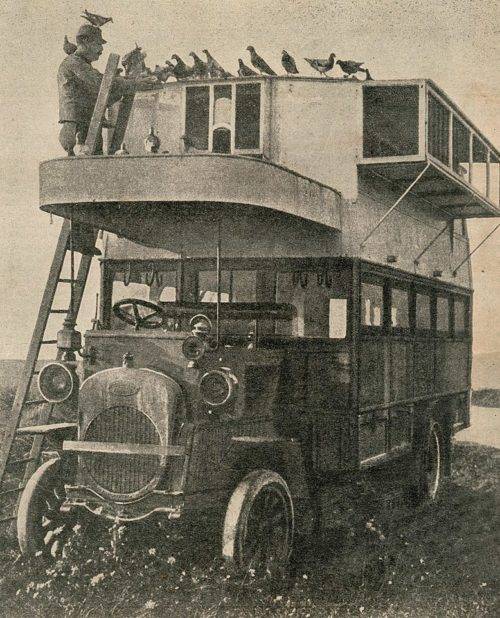
Mobile pigeon station of the French army, autumn 1916
After the end of the Franco-Prussian War, military-pigeon communication began to spread throughout Europe. By the beginning of the Russian-Turkish war of 1877-1878, two new specialties appeared in the Russian imperial army in the engineering troops: aeronautics and pigeon communication. By the end of the XNUMXth century, there were units of military pigeon mail in many European armies. Military dovecotes were deployed in important cities and fortresses. Even the mobilization of birds from private societies and organizations in time of war was envisaged.
The organization of pigeon communication during the First World War in all armies of the world was approximately the same. The base for organizing military pigeon communications was a stationary or mobile (field) pigeon station, which could be placed on a specially equipped cart or car. On average, the operating range of such stationary pigeon stations was 300-500 km, mobile stations worked at a shorter range - 50-150 km. The warring countries tried to place stationary military dovecotes in a place visible from the height of the pigeon's flight.
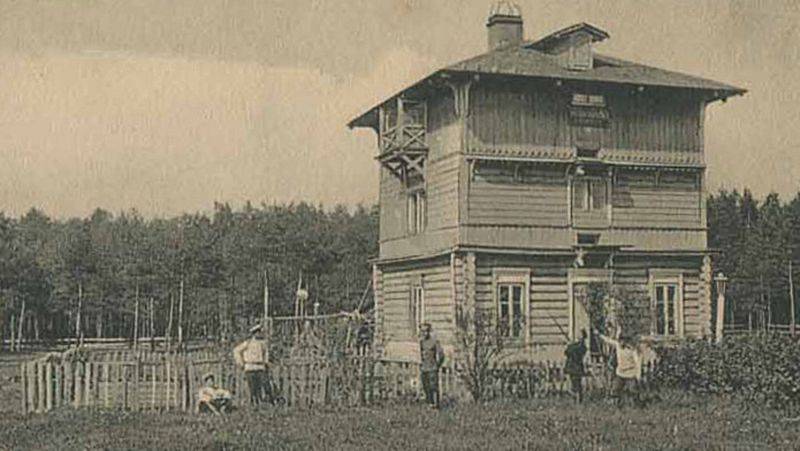
Military pigeon station of the Russian army in Baranovichi, 1915
The pigeon communication of those years had the following "tactical and technical characteristics": the average speed of message transmission was up to 70 km / h, the flight altitude of birds was about 300 meters. The preparation of the carrier pigeon took about 2-3 years. At the same time, four main breeds were used to organize postal services: the Flanders (or Brussels), Antwerp, Luttich pigeons and the English quarry. Pigeons could indeed fly up to 1000 kilometers, but the bird could freely cover such a distance no earlier than three years of age. With a total lifespan of carrier pigeons up to 25 years, their military service reached 15 years.
The pigeons carried special bluegrams (text messages in a greatly reduced format). These messages were placed in a special metal tube (port-dispatch), the tube was usually attached to the pigeon's leg. Most often, dispatches were written on small pieces of thin paper (length 16,5 cm, width 6,5 cm). At Russian military pigeon stations, dispatches were rolled up into a tube, which could be put into a piece of a pigeon or goose feather, after which the piece was stitched at both ends and tied to one or two tail feathers of a pigeon. In order to ensure guaranteed delivery of the message, three pigeons were usually sent at once. This was reasonable considering that 10-30% of feathered postmen could not reach the target for various reasons. Over the territory where the battles were taking place, they could become a victim of battles, in addition, the pigeons had natural opponents - birds of prey. Even during the siege of Paris, the Germans tried to use specially trained hawks to intercept carrier pigeons.
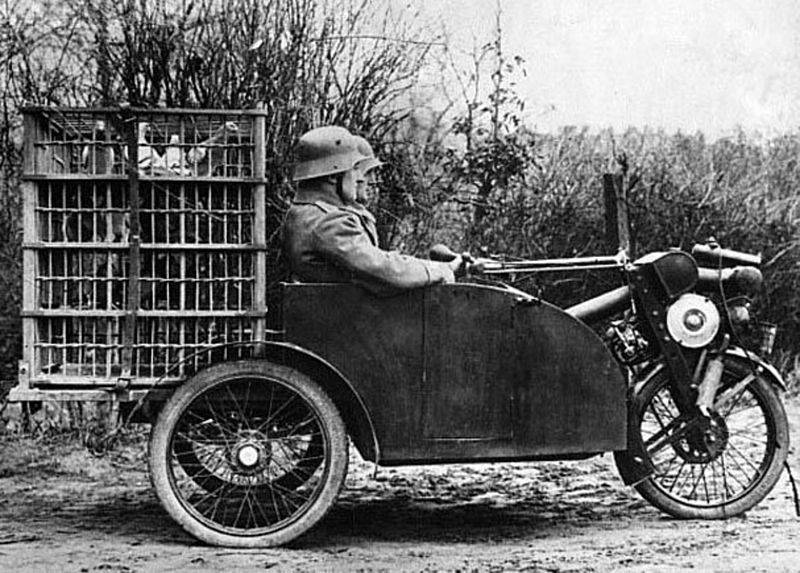
German motorized carriage for pigeon mail
Pigeons were used en masse in World War I and in a variety of situations: they were sent with messages from airplanes soaring in the sky, and from the first tankswho took to the battlefield. By the end of the war, the armies of the allies of the Russian Empire (Great Britain, France and the United States) numbered about 400 thousand military carrier pigeons, while the German army had about 150 thousand trained birds. It is noteworthy that the French and British mobilized about 65 pigeons from private owners during the war.
At the same time, the First World War became a kind of swan song for pigeons, this is such a bird's pun. The development of wired and especially radio communications, the increasing spread of these means of communication in military affairs supplanted the pigeon communication. Despite this, many howling countries have appreciated the contribution and merits of pigeons. Even during the war years in Brussels, a monument was unveiled to the feathery dove soldiers who died during the war.
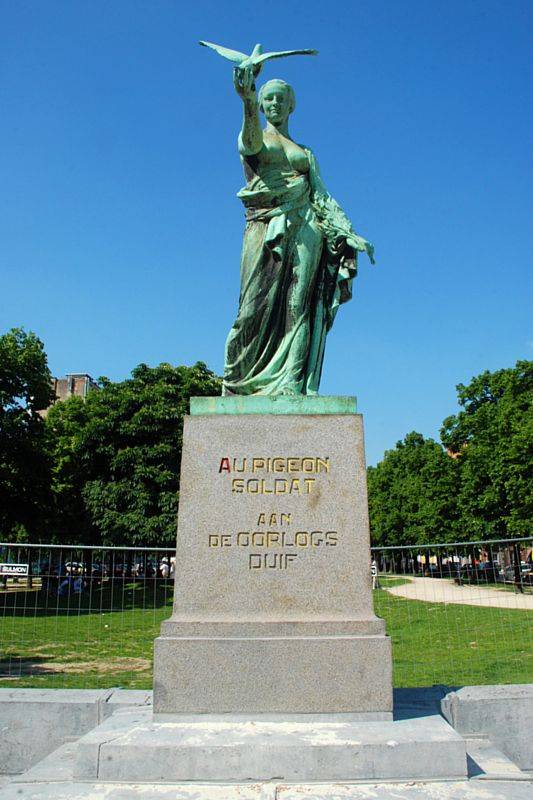
Monument to Dove Soldiers in Brussels
Doves in World War II
Despite the massive development of technology and the spread of radio communications, pigeons were used as communicating birds during the Second World War. There were examples of the use of birds by resistance fighters in Europe, as well as partisans and underground fighters in the USSR. During the war years, the British Intelligence Agency conducted a large-scale Operation Columba, dropping cages with specially trained pigeons over the occupied territory of Europe and appealing to the local population to share intelligence information.
It is noteworthy that both the Soviet and German command during the war took vigorous measures aimed at taking the situation with carrier pigeons in the theater of operations under tight control. For example, when the Germans approached Moscow in the fall of 1941, the city's military commandant signed an order to hand over the birds to the police department. So it was planned to prevent the use of this communication channel by elements hostile to Soviet power. The Nazis in the occupied territories acted in the same vein, considering carrier pigeons an illegal means of communication. All pigeons were subject to seizure from the population and subsequent destruction, the Nazis punished them with death for sheltering birds.
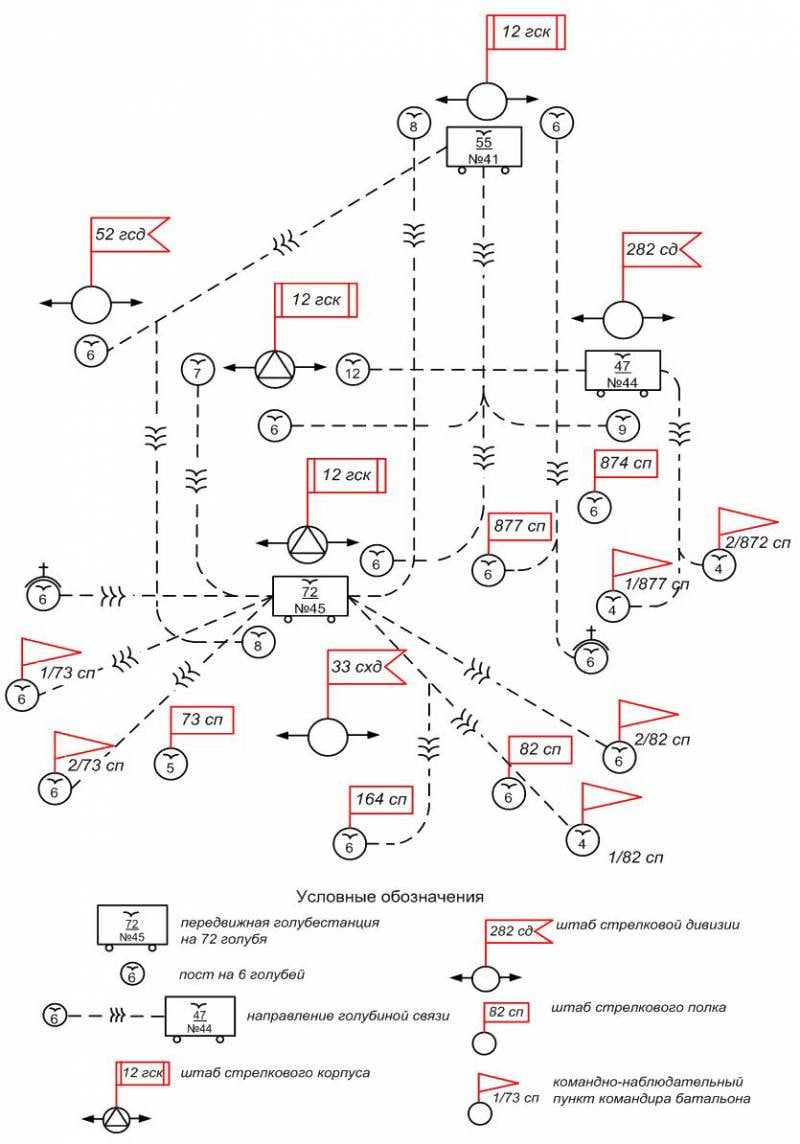
Diagram of the organization of two-way pigeon communication in battles during the crossing of the Velikaya River on June 23-26, 1944, the RF Ministry of Defense
In the Red Army, pigeons were used for communication rather limitedly, mainly in the interests of the reconnaissance departments of the armies. For example, at the beginning of the summer of 1942, a pigeon station was deployed in the zone of operations of the Kalinin Front. The station was transferred to the 5th Infantry Division, where it was used to provide communications with divisional and army reconnaissance groups that operated in the near rear of the German troops. The pigeon station was installed at the location of the reconnaissance company about three kilometers from the front. During a month of work, she changed her location four times, which did not interfere with the work of feathered messengers. At the same time, statistical data showed that the losses of carrier pigeons in the Great Patriotic War were significant. For every two months of the war, up to 30 percent of the trained pigeons died from shell and mine fragments.
In Great Britain, pigeons were used for military purposes very massively. This was due to the specifics of the country's armed forces. Birds were used in the Royal Navy navy, KVVS, as well as the Intelligence Service. In the fleet, carrier pigeons were transported on ships and submarines, counting on their ability to deliver information with coordinates to the shore in case of a disaster, which will not be superfluous when organizing rescue operations. In total, during the war years in Great Britain there were up to 250 thousand carrier pigeons, put under arms, half of them were mobilized from private owners.
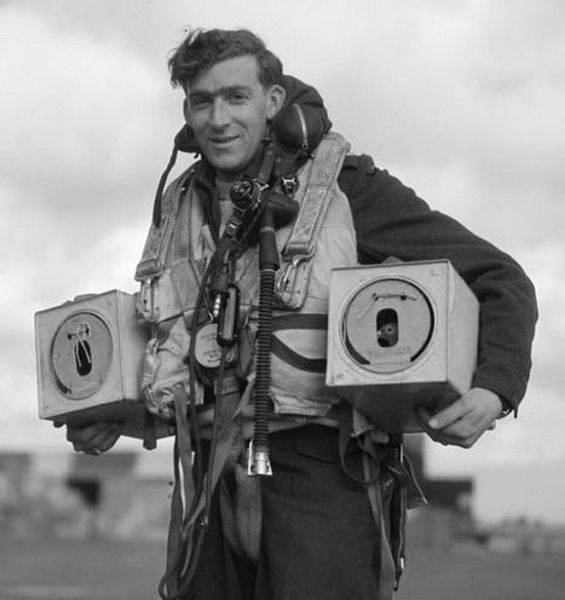
Avro Lancaster bomber pilot with boxes of carrier pigeons. England, October 1942
Homing pigeons were widely used in the Royal Air Force. Two pigeons in special waterproof baskets could be taken on board a bomber or a reconnaissance aircraft that flew to the territories occupied by the Germans. In the event of an emergency and the inability to use radio communications, the pigeons were supposed to deliver information about the location of the aircraft. During an emergency landing or water landing, the location was recorded in a special form and placed in a container on the bird's leg.
Some birds had names. For example, the pigeon "Royal Blue", which on October 10, 1940 flew 4 miles in 10 hours 120 minutes. This pigeon was the first to deliver a message from a downed British plane that made an emergency landing in Nazi-occupied Holland. For the delivery of information about the location of the crew in March 1945, the bird was awarded the Deakin Medal. Already after the war, the RAF calculated that about one in seven British crews shot down over sea owed their lives to messages that were delivered by carrier pigeons.
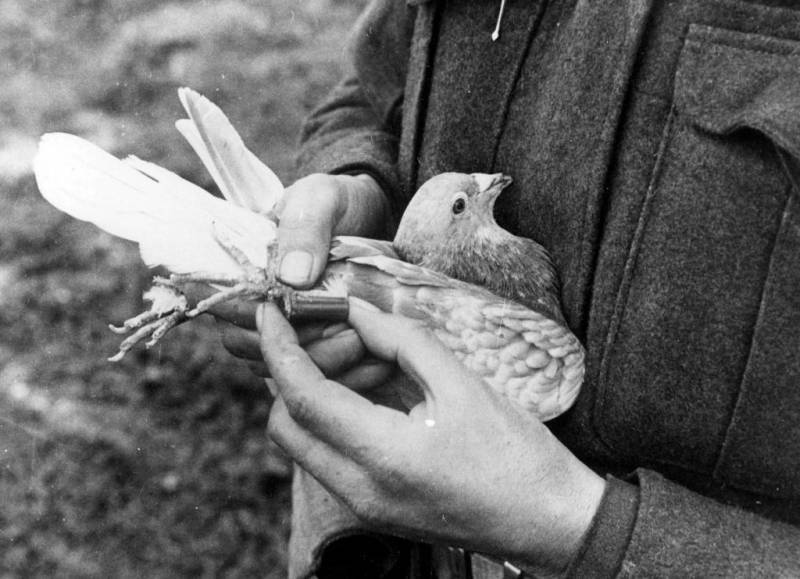
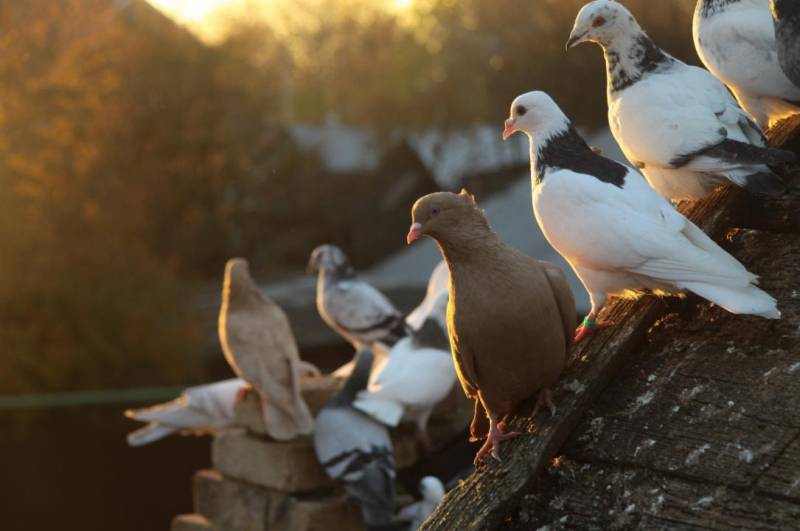
Information